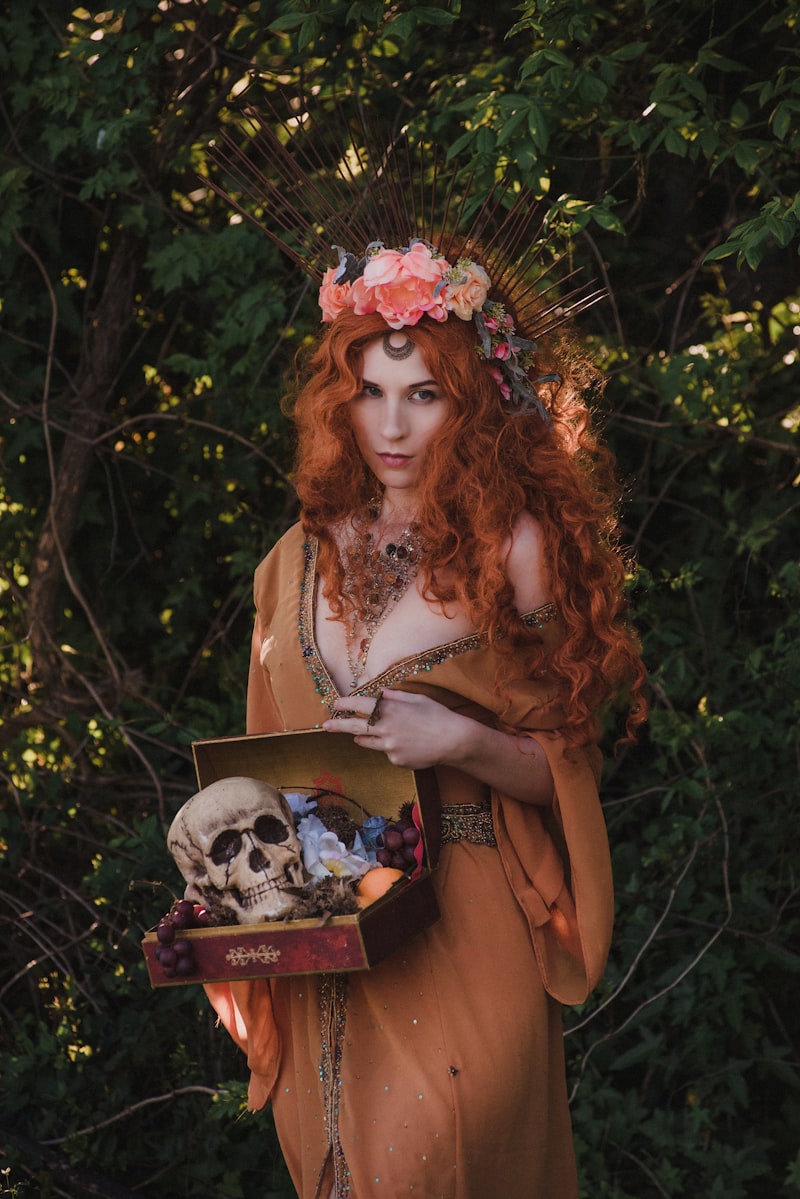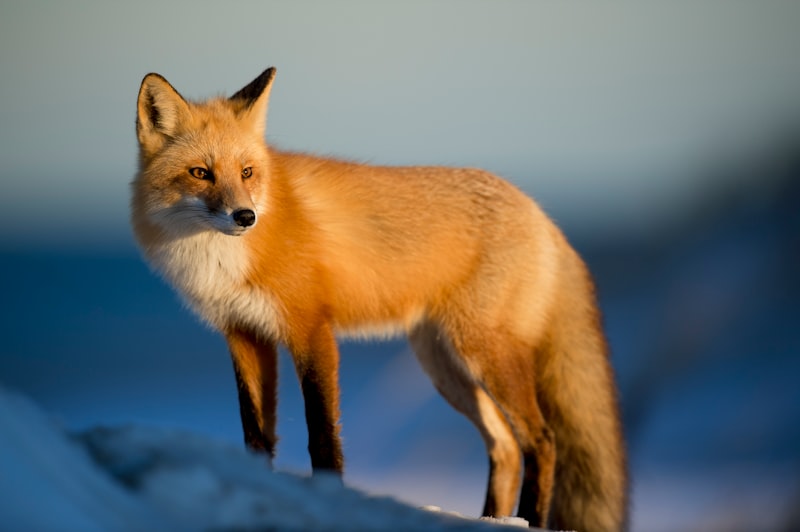Have you ever wondered about the fascinating tales surrounding animals? From majestic dragons in Chinese mythology to the clever fox in Japanese folklore, animals have always held a special place in our stories. These myths and legends not only entertain but also offer insights into different cultures’ beliefs and values.
Dragons are perhaps the most iconic mythical creatures worldwide. In Chinese mythology, dragons symbolize power, strength, and good fortune. They are revered as guardians of rivers, lakes, and seas, controlling the rains and ensuring prosperity for those they favor. Legends tell of dragons transforming into humans and imparting wisdom to worthy individuals, emphasizing their role as symbols of wisdom and leadership.
The Cunning Kitsune: Shapeshifting Tricksters
In Japan, the kitsune, or fox spirit, is a prominent figure in folklore. Known for their intelligence and shape-shifting abilities, kitsune are often depicted as mischievous tricksters who can bring good fortune or play pranks on unsuspecting humans. They are believed to possess great wisdom and magical powers, able to disguise themselves as humans or other creatures to interact with mortals.
In West African and Caribbean folklore, Anansi the Spider stands out as a clever trickster figure. Known for his wit and cunning, Anansi uses his intelligence to outsmart more powerful foes and often finds himself in humorous yet instructive situations. Through his adventures, Anansi teaches lessons about perseverance, wisdom, and the consequences of greed, making him a beloved character in oral traditions across the regions.
Across various cultures, the phoenix represents renewal and resurrection. In Greek mythology, the phoenix is a magnificent bird that cyclically regenerates or is born again from its ashes. This symbolizes the eternal cycle of life, death, and rebirth. The phoenix’s ability to rise from its own destruction embodies hope and the promise of new beginnings, resonating deeply in myths from ancient Egypt to modern interpretations in literature and art.
Unraveling the Truth: Debunking 5 Ancient Animal Myths
Have you ever wondered about the fascinating tales surrounding ancient animals? From majestic creatures of myth to fearsome beasts of legend, history has woven intriguing stories about these creatures. But how much of it is true? Let’s dive into the myths and separate fact from fiction.
-
The Unicorn’s Existence: One of the most enduring myths is that of the unicorn, a horse-like creature with a single spiraling horn. While ancient civilizations believed in its existence, modern science points to a more grounded explanation. The unicorn may have been inspired by sightings of the Indian rhinoceros or the oryx, both animals with prominent horns.
-
Dragons Roaming the Earth: Dragons, with their ability to breathe fire and fly, have captured imaginations worldwide. However, these creatures are purely mythical. The concept of dragons likely arose from fossil discoveries, such as dinosaur bones, that sparked legends of giant reptilian beasts.
-
The Mighty Kraken: Tales of the kraken, a colossal sea monster capable of sinking ships, have terrified sailors for centuries. While giant squids do exist, they are not the gargantuan creatures described in stories. The kraken likely emerged from exaggerated accounts of encounters with these real but much smaller deep-sea dwellers.
-
The Phoenix’s Rebirth: The phoenix, a mythical bird that bursts into flames and is reborn from its ashes, symbolizes renewal and immortality. While no such bird exists, the concept of renewal through fire resonates across cultures, representing the enduring human spirit in the face of adversity.
-
Cerberus Guarding the Underworld: In Greek mythology, Cerberus is a three-headed dog that guards the gates of the underworld. While dogs are real, the idea of a multi-headed guardian of the afterlife remains a mythological construct. Cerberus likely symbolizes the fears and mysteries associated with death.
These myths, while fantastical, reflect humanity’s fascination with the natural world and its mysteries. They serve as cultural touchstones, teaching valuable lessons and sparking imaginations across generations. As we unravel these ancient animal myths, we gain insights into the human psyche and our enduring quest to understand the world around us.
From Dragons to Unicorns: Exploring Legendary Creatures of Lore
Dragons, with their colossal scales and fiery breath, embody the raw power of nature itself. Found in tales from Europe to Asia, dragons vary in appearance and behavior but universally evoke awe and fear. Whether guarding treasure hoards or wreaking havoc upon kingdoms, these creatures symbolize both danger and wisdom in equal measure.
In stark contrast, unicorns represent purity and grace. Often depicted as majestic horses with a single spiraling horn, unicorns are elusive beings that are said to only appear to the purest of heart. Revered for their healing properties and association with innocence, unicorns have become symbols of hope and magic in popular culture.
Both dragons and unicorns transcend mere myth; they serve as allegories for human desires and fears. Dragons embody our struggle against primal forces and the conquest of the unknown, while unicorns symbolize our yearning for beauty, purity, and the mystical.
In literature and folklore, these creatures continue to inspire stories of heroism and adventure. From tales of dragon slayers to quests for the elusive unicorn, their presence fuels narratives that explore courage, virtue, and the eternal battle between light and darkness.
Beyond folklore, dragons and unicorns have permeated modern media, from books to movies and even corporate logos, where they evoke notions of strength, rarity, and the fantastical. Their enduring appeal lies in their ability to evoke wonder and spark the imagination, reminding us of the enduring power of myth and the allure of the unknown.
As we navigate the complexities of our world, dragons and unicorns remain potent symbols that invite us to dream, to believe in the extraordinary, and to embrace the magic that resides within us all.
Mythical Beasts Revealed: The Real Stories Behind Fabled Creatures
Dragons, with their scaly bodies and fearsome roars, have been portrayed as both protectors and adversaries in countless tales. These mythical beings often symbolize power and wisdom in many cultures, from the Chinese Lung to the European wyverns. But did you know that dragons might have roots in real discoveries, such as dinosaur fossils? Imagine stumbling upon a massive skull with teeth like daggers – it’s no wonder ancient civilizations spun tales of such awe-inspiring creatures!
Moving from land to sea, the legendary Kraken has long been feared by sailors for its ability to drag entire ships to the depths of the ocean. Tales of giant squids attacking vessels might seem far-fetched, but modern science has revealed the existence of colossal squid species that could easily inspire such myths. Picture an enormous tentacle rising from the depths – a chilling sight that fuels the imaginations of storytellers even today.
In contrast, the unicorn, with its single spiraling horn and gentle demeanor, represents purity and grace. Stories of unicorns date back to ancient Greek texts and have persisted through medieval European folklore. While no evidence of a horse-like creature with a horn exists, the unicorn’s symbolism as a rare and mystical being endures in popular culture and literature.
What about the phoenix, the mythical bird that rises from its own ashes? This creature symbolizes renewal and resilience, appearing in various forms across Egyptian, Greek, and Chinese mythology. Its ability to be reborn from fire captures the human desire for transformation and overcoming adversity – a timeless message that resonates through the ages.
Mythical beasts continue to captivate us because they reflect our deepest fears, hopes, and dreams. Whether they soar through the skies, lurk in the depths of the ocean, or gallop through enchanted forests, these creatures remind us of the boundless creativity of human imagination and the enduring power of storytelling.
Legends of the Deep: Sea Monsters Across Different Cultures
Imagine standing on the edge of the ocean, peering out into the vast expanse of water. For centuries, the seas have been a realm of mystery and wonder, where sailors and explorers encountered creatures that defied belief. These are the legends of sea monsters, creatures that lurked in the depths and haunted the imaginations of sailors across different cultures.
In Norse mythology, tales of the Kraken abound. This colossal creature was said to dwell off the coasts of Norway and Greenland, capable of capsizing ships with its immense size and strength. Vikings feared its wrath and spun tales of epic battles between the Kraken and ships that dared to venture too close.
Far across the seas in Japan, the legend of the Umibozu strikes fear into the hearts of fishermen. This spirit takes the form of a giant monk, rising from the water to capsize boats and drag sailors into the abyss below. Its name translates to “sea monk,” a nod to its eerie appearance and mysterious origins.
In the waters of Scotland, the Loch Ness Monster, affectionately known as Nessie, reigns supreme. Described as a long-necked creature with humps protruding from the water, Nessie has sparked numerous sightings and debates over its existence. Whether a trick of light or a genuine cryptid, Nessie continues to capture the imagination of locals and tourists alike.

Across cultures, these sea monsters embody the fear and fascination humans have with the unknown depths of the ocean. They represent the mysteries that lie beneath the waves, where reality blends with fantasy and every shadow holds the potential for a new legend to unfold.
As we continue to explore and uncover the secrets of the deep, these stories remind us of the power of the sea and the enduring allure of creatures that defy explanation. Whether myth or reality, sea monsters remind us of our ancient connection to the oceans and the endless wonders they contain.
Animal Alchemy: How Myths Turned Ordinary Creatures into Marvels
In the tapestry of human imagination, myths and legends have woven extraordinary tales around ordinary creatures, transforming them into marvels that captivate and intrigue. From the majestic griffin, a blend of lion and eagle, to the elusive unicorn with its single spiraling horn, these mythical beings have transcended mere folklore to become symbols of power, grace, and mystery.
Take the phoenix, for instance, a bird of fire reborn from its own ashes. This legendary creature symbolizes renewal and resilience, embodying the eternal cycle of life and death. Its mythical existence sparks wonder and contemplation, resonating with cultures across centuries as a testament to the enduring human spirit.
Similarly, the mermaid enchants with her half-human, half-fish form, embodying the allure of the unknown depths. Legends of mermaids have fascinated sailors and storytellers alike, symbolizing the beauty and danger that lurk beneath the waves. These tales evoke a sense of wonder about the vastness of the ocean and the creatures that inhabit its realms.
Dragons, perhaps the most iconic of mythical beasts, embody both terror and wisdom. From European lore’s fire-breathing serpents guarding treasure hoards to the benevolent dragon kings of Chinese mythology, these creatures symbolize power and transformation. They challenge heroes in epic quests and represent the dualities of good and evil, light and darkness.
The power of myth lies not only in storytelling but also in the symbolism it imparts. Creatures like the centaur, combining human intellect with the strength of a horse, embody the fusion of disparate qualities into a single entity. These hybrid beings blur the lines between reality and fantasy, inviting us to contemplate the boundaries of human potential and imagination.

The alchemy of myths transforms ordinary creatures into symbols of extraordinary significance. Through storytelling, humans have infused these animals with qualities that resonate deeply within our collective consciousness. They serve as mirrors to our aspirations, fears, and wonders, enriching cultures and inspiring generations to ponder the mysteries of existence itself.
Fact or Fable? Investigating the Origins of Famous Animal Myths
Let’s delve into the fascinating world of animal myths and uncover the truth behind some of the most famous tales.
One of the most enduring myths surrounds the cunning fox. Renowned for its slyness and cleverness, the fox has been depicted as a trickster in folklore from Europe to Asia. But where did this reputation come from? In ancient European folklore, the fox often outwitted larger, stronger animals through its wit and cunning, becoming a symbol of intelligence and adaptability.
Another intriguing myth revolves around the wise owl. Universally recognized as a symbol of wisdom, the owl’s association with knowledge can be traced back to ancient Greece, where it was linked to the goddess Athena, who was revered for her wisdom and strategic prowess. The owl’s ability to see in the dark further added to its mystique, symbolizing the ability to perceive what others cannot.
Moving to the animal kingdom’s largest predator, the majestic lion has long been viewed as the king of beasts. In various African and Asian cultures, lions have been portrayed as symbols of strength, courage, and leadership. This reputation likely stems from their dominance in the wild and their impressive hunting prowess, which earned them respect and admiration.
In contrast, the humble tortoise offers a contrasting myth of perseverance and determination. Found in myths from ancient Greece to Native American folklore, the tortoise’s slow and steady approach has symbolized endurance and resilience. Its portrayal as a hero in various creation stories reflects its ability to overcome challenges through patience and persistence.
As we unravel these myths, it becomes clear that animals have served as powerful symbols in human storytelling, reflecting our values, fears, and aspirations. Whether factual or fictional, these stories continue to captivate our imaginations and remind us of the enduring connection between humans and the animal kingdom.
Frequently Asked Questions
What are some famous animal myths from around the world?
Explore famous animal myths from diverse cultures worldwide, uncovering intriguing stories and beliefs about animals that have transcended generations.
Are there any animals considered sacred in various cultures?
Discover which animals hold sacred status across different cultures. Learn about the significance of these animals and their roles in spiritual and cultural practices worldwide.
Are there any modern stories inspired by ancient animal legends?
Discover how modern literature draws inspiration from ancient animal legends, weaving timeless tales into contemporary narratives. Explore how authors reinterpret mythical creatures and legendary beasts in compelling new contexts, offering fresh perspectives on age-old stories.
Do animals have symbolic meanings in myths and legends?
Learn about the symbolic meanings animals hold in myths and legends across cultures. Discover how animals are often used to represent virtues, vices, or natural forces, providing deeper insights into cultural beliefs and storytelling traditions.
How do animal myths explain natural phenomena?
Learn how animal myths explain natural phenomena through cultural storytelling and symbolism, offering insights into early human understanding of the natural world.



